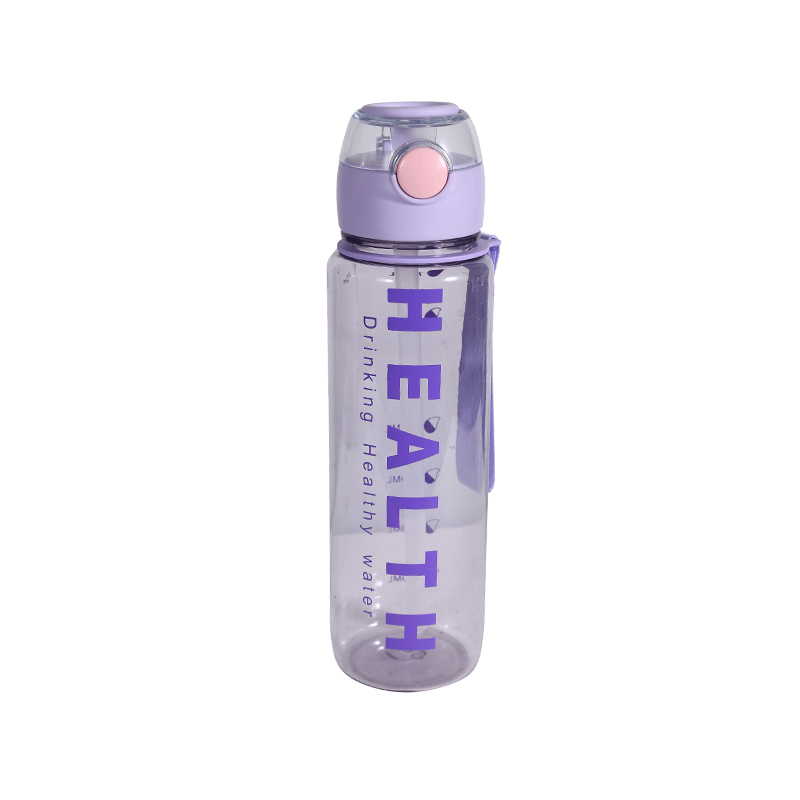Introduction to Aging and Deformation in Plastic Water Bottles
Leak proof plastic water bottles have become widely favored for their convenience, safety, and spill-resistant features. However, many users wonder if these bottles are prone to aging or physical deformation during regular use. Aging refers to the gradual deterioration of the material properties over time, while deformation relates to changes in the shape or structural integrity of the bottle. This article explores the factors influencing aging and deformation in leak proof plastic water bottles and how these issues can be reduced.

Material Composition and Its Role in Durability
The materials used in leak proof plastic water bottles play a vital role in their resistance to aging and deformation. High-quality plastics such as Tritan, polypropylene (PP), and polyethylene terephthalate (PET) are commonly chosen for their good durability, chemical resistance, and flexibility. Tritan, for example, is known for its toughness and resistance to cracking or discoloration. Plastics with good resistance to UV light and temperature variations tend to age more slowly, maintaining performance and appearance for longer periods.
Environmental Factors Affecting Aging and Deformation
Exposure to sunlight, heat, and harsh chemicals can accelerate aging and deformation in plastic bottles. Ultraviolet (UV) radiation from the sun can break down polymer chains, causing brittleness and discoloration. High temperatures, such as those from leaving bottles in hot cars or near heat sources, can cause plastics to soften or warp, compromising the bottle's shape and seal. Chemical exposure from cleaning agents or acidic beverages can also degrade plastics if not properly formulated for resistance.
Mechanical Stress and Handling
Physical stresses such as dropping, squeezing, or improper storage can contribute to deformation. While leak proof plastic water bottles are designed to be durable, repeated impacts or excessive force may cause dents, cracks, or warping. Over-tightening caps or mishandling seals can also degrade the sealing components, causing leaks or functional failure. Proper handling and storage help maintain structural integrity and prolong the lifespan of the bottle.
Design Features That Mitigate Aging and Deformation
Manufacturers incorporate several design elements to enhance the durability of leak proof plastic water bottles. Reinforced necks and bases provide structural support against impacts and pressure. Flexible sealing gaskets made from durable silicone resist compression set and maintain effective seals over time. Some bottles also feature UV inhibitors or coatings that reduce the effects of sunlight. These features collectively reduce the likelihood of premature aging and deformation.
Maintenance and Care Practices
How users maintain their bottles significantly affects aging and deformation. Regular cleaning with mild detergents, avoiding abrasive scrubbers, and preventing exposure to extreme temperatures extends the bottle’s functional life. Following the manufacturer's guidelines on use and cleaning helps preserve the plastic's integrity. For example, avoiding dishwasher use if not recommended prevents thermal stress that can cause warping.
Signs of Aging and When to Replace
Over time, users may notice signs such as discoloration, surface brittleness, cracks, or leaks that indicate aging or deformation. Changes in fit or seal tightness can also signal wear in sealing components. When these signs appear, it is advisable to replace the bottle to ensure safety and leak-proof performance. Regular inspection is essential for users who rely on these bottles daily.
Longevity Depends on Quality and Care
In conclusion, leak proof plastic water bottles can resist aging and deformation effectively if manufactured from high-quality materials and cared for properly. Environmental exposure, mechanical stress, and user maintenance are key factors influencing their lifespan. With thoughtful use and attention, these bottles can provide long-lasting, reliable hydration solutions. Consumers should be mindful of signs of wear and replace bottles as needed to maintain suitable performance.

 English
English 中文简体
中文简体 Español
Español